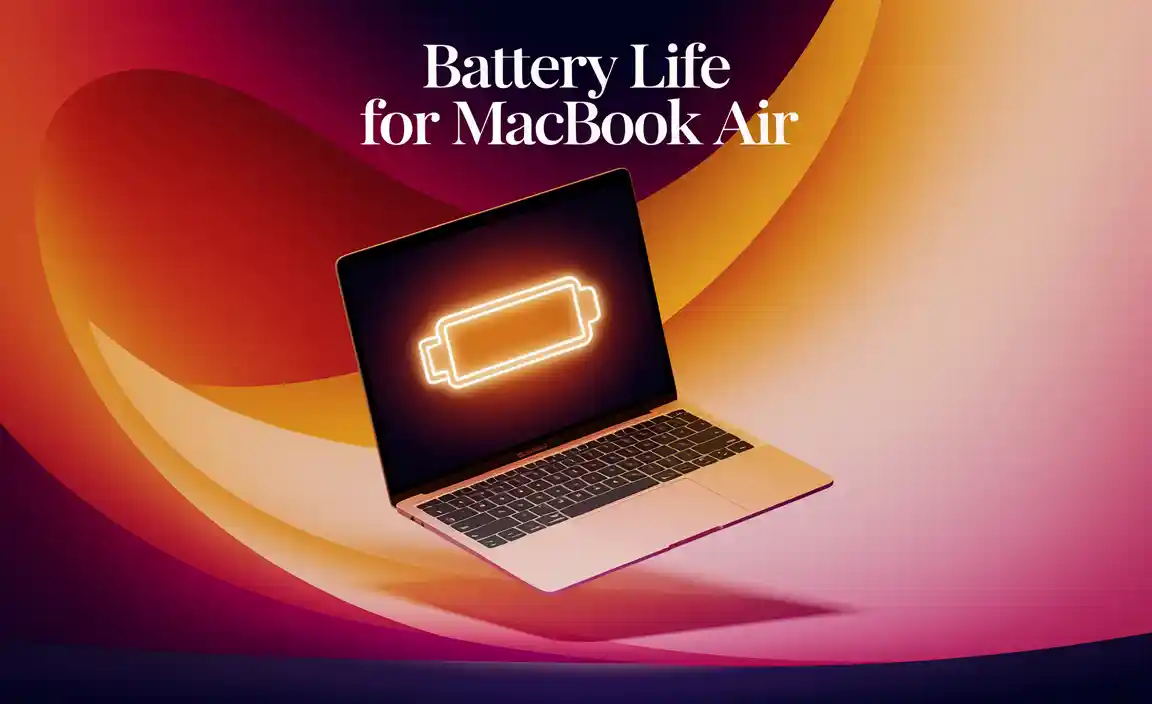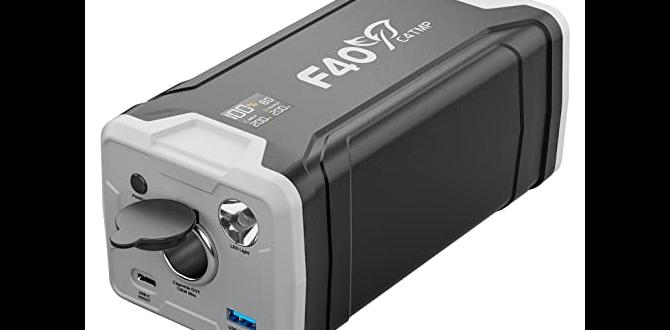Have you ever wondered how much voltage your 12-volt battery can actually take? Understanding the maximum charging voltage for a 12v battery is really important. It helps keep your battery running smoothly and safely.
Imagine your battery is like a water balloon. If you fill it too much, it might burst. The same goes for charging your 12-volt battery. If you give it too much voltage, it can get damaged. So, how do you know the right amount?
Did you know that most 12v batteries should charge between 13.6 to 14.4 volts? This range ensures they get enough power without harming them.
When you understand the maximum charging voltage for a 12v battery, you protect both your battery and your devices. Let’s dive into this topic and learn more!
Maximum Charging Voltage For 12V Battery: Essential Guide

Maximum Charging Voltage for 12V Battery
Understanding the maximum charging voltage for a 12V battery is crucial for its health. Overcharging can damage the battery and shorten its lifespan. Typically, the safe maximum charging voltage is around 14.4 to 14.7 volts. Did you know that charging too high can cause heat, leading to battery failure? Imagine your phone overheating because it’s plugged into the wrong charger. Always check your charging equipment to protect your battery and keep your devices running longer!Understanding 12V Battery Basics
Types of 12V batteries: Leadacid, Liion, etc.. Importance of voltage in battery charging.There are different types of 12V batteries, each with its quirks. The most common ones are lead-acid and lithium-ion. Lead-acid batteries are heavy and can be grumpy when not maintained. Lithium-ion batteries are lighter, charge faster, and are more like that friend who always shows up energized! Understanding the importance of voltage during battery charging is key. Charge too high and it’s like feeding a gremlin after midnight—bad things happen! Here’s a quick look at types and their max charging voltages:
| Type | Maximum Charging Voltage (V) |
|---|---|
| Lead-Acid | 14.4-14.8 |
| Lithium-Ion | 14.6 |
Charging Voltage Specifications
Industry standards for 12V battery charging voltage. Differences between float, absorption, and equalization voltages.The world of battery charging has clear rules. For a 12V battery, it’s crucial to know the charging voltage. Here are the main charging stages:
- Float Voltage: This keeps the battery fully charged without overcharging. It’s usually around 13.2 to 13.8 volts.
- Absorption Voltage: Here, the battery gets a strong charge until it reaches about 14.4 to 14.8 volts. This stage is key for battery health.
- Equalization Voltage: This helps balance all battery cells. It can go up to 15 volts but should be done carefully.
Following these specifications helps batteries last longer. Charging correctly ensures better performance and safety.
What is the maximum charging voltage for a 12V battery?
The maximum charging voltage for a 12V battery is typically around 14.8 volts during absorption. Always follow guidelines to avoid damage.
Factors Influencing Maximum Charging Voltage
Battery chemistry and its impact on voltage requirements. Ambient temperature effects on charging parameters.Several factors affect the maximum charging voltage of a battery. One key element is battery chemistry, which determines the voltage needs. For example, lithium batteries require a different maximum voltage than lead-acid batteries. Another factor is ambient temperature. High or low temperatures can change how efficiently a battery charges. Warmer settings often allow for higher voltage, while cold weather can make charging less effective.
How does battery chemistry affect charging voltage?
The chemistry of the battery strongly influences its voltage. For instance, lithium batteries need a higher voltage than traditional lead-acid batteries. This means you must adjust your charger to match the battery type for safe charging.
- Lead-acid: 14.4V – 14.7V
- Lithium: 14.6V – 14.8V
How does temperature impact charging?
Temperature plays a big role in charging. Cold temperatures can lower charging efficiency. In contrast, warm temperatures can help batteries charge faster. It’s essential to monitor both the battery and the environment for safe charging.
Effects of Overcharging
Risks associated with exceeding maximum charging voltage. Signs of overcharging in 12V batteries.Overcharging a battery can be dangerous. When the voltage goes too high, it can cause damage. This may lead to melting or leaking. Both are serious problems. It can even create a fire. Signs of overcharging include:
- Hot battery surface
- Swelling or bulging
- Unusual smells
These signs show the battery needs attention. Always check the voltage to avoid risks.
What happens if a 12V battery is overcharged?
Overcharging can reduce battery life or even ruin it. It can also create safety hazards.
Best Practices for Charging 12V Batteries
Recommended charging methods and equipment. Monitoring and maintaining optimal charging conditions.To safely charge a 12v battery, use a reliable charger designed for this purpose. Choose the right method, such as trickle charging or fast charging, based on your needs. Monitor the charging time to prevent overcharging, which can damage the battery. Keep the environment cool and well-ventilated. An optimal charging voltage should not exceed 14.4 volts. Regular checks on the battery’s condition and fluid levels can extend its life.
What are some options for charging 12v batteries?
Some popular options are:
- Smart chargers: Automatically adjust voltage and current.
- Trickle chargers: Charge slowly, keeping the battery topped off.
- Solar chargers: Use sunlight for charging in remote areas.
How to know if the charging conditions are optimal?
Check the battery voltage regularly. Ensure the charger’s voltage stays between 13.8 and 14.4 volts. Make sure the temperature stays below 50°C (120°F) during charging. Keeping the connections clean also helps greatly.
Common Misconceptions about Charging Voltage
Myths surrounding maximum voltage limits. Clarifications on charging leads and equipment compatibility.Many believe that higher voltage always means faster charging. This isn’t true for all devices. Each battery has a maximum charging voltage. Exceeding this can harm the battery. It’s also a myth that all chargers work with every battery. Always check compatibility. Using the wrong charger can cause damage.
What is the maximum charging voltage for a 12V battery?
The maximum charging voltage for a 12V battery is typically around 14.4 to 14.7 volts. Charging beyond this can shorten the battery’s life.
Common Myths:
- Higher voltage means faster charging.
- All chargers are the same.
- More voltage is always better.
We must understand these points to avoid damaging our batteries. Always read your battery’s guidelines to ensure proper care.
Troubleshooting Charging Issues
Common problems related to incorrect charging voltage. Solutions for ensuring proper charging of 12V batteries.Charging problems happen when the voltage is wrong. This can lead to weak or dead batteries. Some common issues include:
- Battery overheating.
- Short battery life.
- Batteries not holding a charge.
What is the correct charging voltage for a 12V battery?
The maximum charging voltage for a 12V battery is typically 14.4 to 14.7 volts. This helps the battery charge fully without damage.
Here are tips to ensure proper charging:
- Use a good quality charger.
- Check connections regularly.
- Monitor the charging time.
Conclusion
In summary, the maximum charging voltage for a 12V battery is usually around 14.4 to 14.7 volts. This ensures efficient charging without damage. Always check your battery’s specifications for accuracy. Now that you know the basics, consider practicing safe charging techniques. For more details, read up on battery maintenance. You’ll become a battery expert in no time!FAQs
What Is The Recommended Maximum Charging Voltage For A Standard Lead-Acid 1Battery?The recommended maximum charging voltage for a standard lead-acid battery is about 14.4 to 14.8 volts. If you charge it higher than this, you might damage the battery. Always check your battery’s instructions to be sure. Keeping the right voltage helps the battery last longer!
How Does The Charging Voltage Differ Between Various Types Of 1Batteries, Such As Agm, Gel, And Flooded Lead-Acid?Different types of batteries need different charging voltages. AGM (Absorbent Glass Mat) batteries usually need about 14.4 to 14.7 volts. Gel batteries require around 14.0 to 14.4 volts. Flooded lead-acid batteries need about 14.2 to 14.6 volts. Using the right voltage helps keep the batteries working well and lasts longer.
What Are The Potential Risks Of Exceeding The Maximum Charging Voltage For A 1Battery?If you charge a battery too much, it can get very hot. This overheating can make the battery swell or even burst. A damaged battery could leak harmful chemicals. In some cases, it might catch fire. It’s important to always follow the charging rules to stay safe.
How Can Temperature Affect The Maximum Charging Voltage For A 1Battery During Charging?Temperature can change how much voltage a battery can safely take while charging. When it’s hot, a battery might get damaged if we give it too much voltage. On the other hand, when it’s cold, it might need a bit more voltage to charge properly. So, we should always watch the temperature to keep our batteries safe while charging.
What Tools Or Devices Can Be Used To Monitor And Control The Charging Voltage Of A 1Battery?You can use a multimeter to check the battery’s voltage while it’s charging. A charge controller helps manage how much power goes into the battery. Battery management systems (BMS) keep the battery safe and healthy. These tools help you ensure the battery charges correctly.






